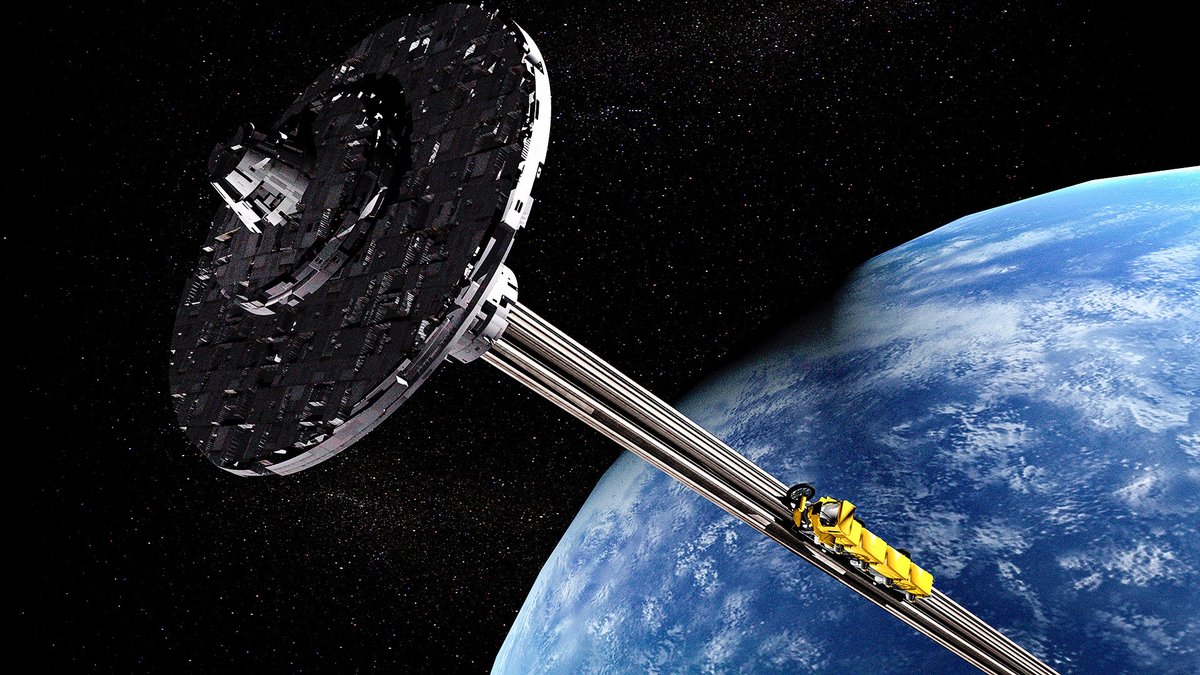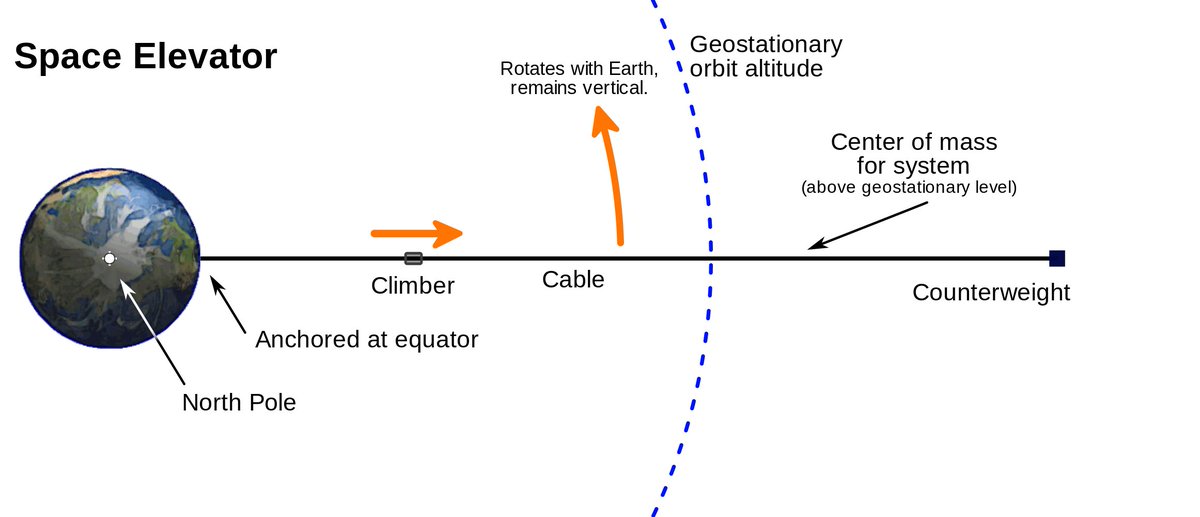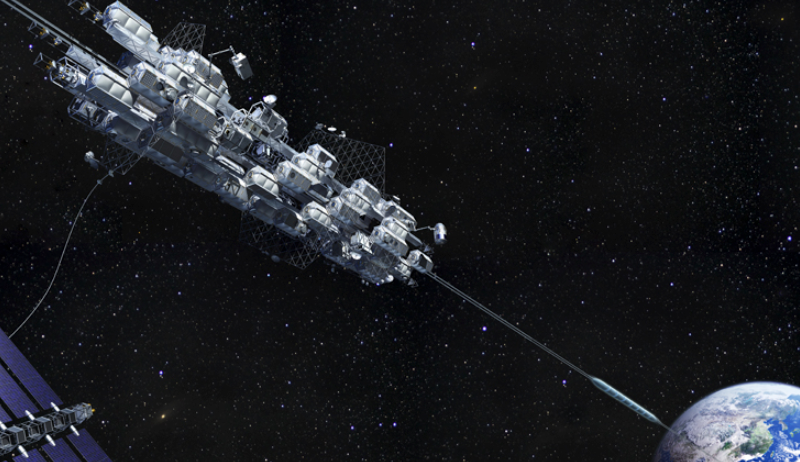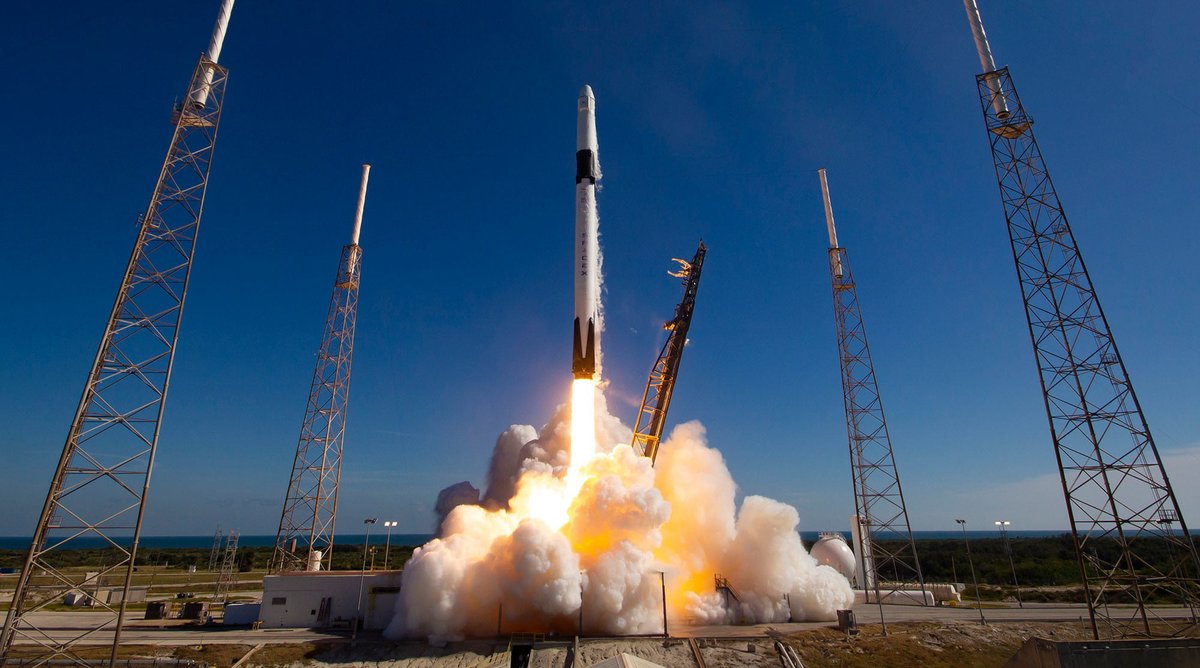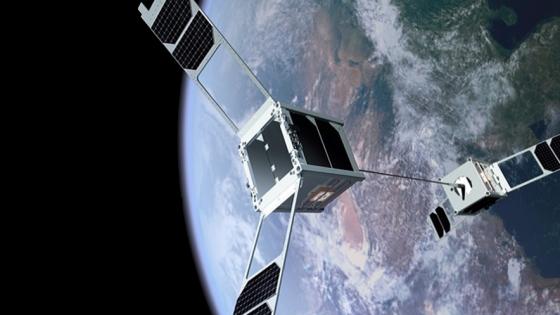Space elevators! Many of us have been on a regular elevator, but imagine one that takes you from the surface of the Earth to the cosmos above. Cool, right? Today I& #39;m going to talk about what space elevators are, how they function, and some present-day research. #scicomm (1/20)
Before you read, if you want to read my blog post where I go into much more detail, including a bit about space elevator disadvantages and them existing on other celestial bodies, click here: http://www.joalda.space/post/space-elevators">https://www.joalda.space/post/spac... (2/20)
It was in 1895 that Russian rocket scientist Konstantin Tsiolkovsky, aka the father of rocket science, thought of this space elevator idea, first inspired by the Eiffel Tower. The space elevator would be placed at the equator and reach well beyond geostationary orbit... (3/20)
...(GEO) which is around 22000 miles above the surface. Tsiolkovsky advocated for a compression structure where the weight of the space elevator structure would be supported by the material at the bottom, like a tower. There isn& #39;t any material that can support this heavy...(4/20)
...of a structure right now, so this led to researchers looking into a space elevator design that used tensile strength. What does this mean exactly? There are 4 main components of the modern space elevator, which is the tether, anchor station, climber, and counterweight. (5/20)
So first the tether, the most important component. The tether& #39;s center of mass would be above GEO, and it must be strong enough to support its weight from that point to the surface, and withstand space debris, micrometeorites, etc. This means it will need a... (6/20)
...strong material to accomplish this. Currently, carbon nanotubes (CNTs), which are just layers of graphene, is our best bet. CNTs are about 100 times stronger than a piece of steel of the same size. Some researchers have considered even using diamond nanothreads. (7/20)
Next is the anchor station, which is the base that will keep the tether in place. An early NIAC proposal stated that a mobile station in the eastern Pacific ocean would be the best spot to situate the space elevator. This is based on observed weather and ocean patterns. (8/20)
A mobile water station allows for the freedom to move when necessary. The NIAC proposal mentioned that the anchor station would be the workplace of many scientists and engineers, specifically stating around 100 people, and it would also be in constant motion. (9/20)
Up next is the climber or the component that actually carries the payload or passengers. A major aspect of the climber is making sure it doesn& #39;t add too much stress to the tether, which would cause it to snap. This changes the type and number of climbers that are on... (10/20)
...the space elevator system at a time. As the climber rose up the tether, it would actually be gaining speed in the horizontal direction to the rotation of the Earth. It could be powered by numerous sources of energy, including solar, nuclear, and even wireless energy. (11/20)
Lastly, the counterweight. This component is essential in making the structure tensile since it helps to balance out the gravity pulling down and the centrifugal force pulling up. There have been a few ideas on what can serve as the counterweight for a space elevator... (12/20)
...on Earth, most notably either an asteroid or space station/docking station. I personally believe that having a space station at the top is just in general a lot cooler and provides more opportunities for the space industry, even though it& #39;ll cost more to build. (13/20)
So what purpose does a space elevator actually serve? It mainly serves as an alternative method of getting payloads into space. Once the climber has gained velocity and has gotten to the top, it has reached escape velocity, which is enough to put something into orbit. (14/20)
Also, the elevator drastically reduces the cost of putting things into space. Right now, SpaceX with its Falcon 9 rocket can put 1 kg into space for around $2700, but with a space elevator, we can do that for as low as $200 per kg. This can lead to the construction...(15/20)
of many cool space structures because in-space manufacturing is cheaper and accessible. Also, a space elevator can lead to the space tourism industry getting a huge boost. Now that it costs less money to put things into space, more people can experience outer space! (16/20)
So are there people doing research on space elevators at the moment? Yes! There exists the International Space Elevator Consortium (ISEC), which supports global efforts in their development through produces publications and also even hosts an annual conference in Seattle. (17/20)
Japan is also at the forefront of this research. In 2018, they launched a mission to @Space_Station called STARS-Me, and it was two 1U CubeSats attached to each other by a tether with a mini climber attached. They were aiming to prove that the technology really worked. (18/20)
There is even a Japanese company called Obayashi who has committed to having a space elevator built by 2050. That& #39;s only 30 years from now, and even though I& #39;m skeptical, I find it absolutely wild that I could possibly see one of these in my lifetime. It& #39;s so exciting! (19/20)
So that& #39;s space elevators! I actually learned a ton from doing this thread, and I might actually keep up with its development since I find the concept so interesting. I hope you all enjoyed and learned something, and stay tuned for a poll on my next set of threads!  https://abs.twimg.com/emoji/v2/... draggable="false" alt="😎" title="Lächelndes Gesicht mit Sonnenbrille" aria-label="Emoji: Lächelndes Gesicht mit Sonnenbrille">(20/20)
https://abs.twimg.com/emoji/v2/... draggable="false" alt="😎" title="Lächelndes Gesicht mit Sonnenbrille" aria-label="Emoji: Lächelndes Gesicht mit Sonnenbrille">(20/20)

 Read on Twitter
Read on Twitter